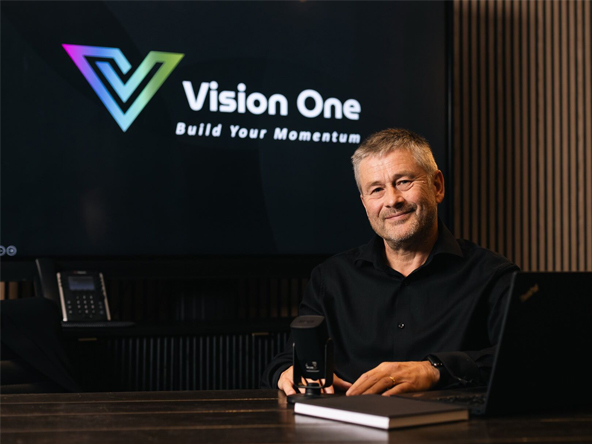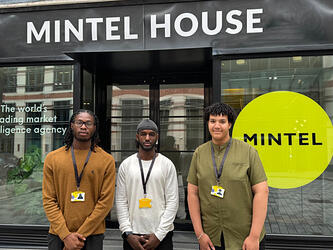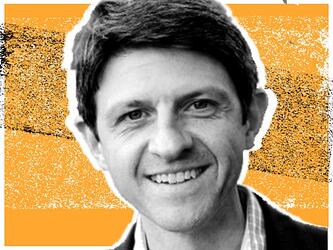Why brands aren’t built, they’re charged

'Brand building’ has become one of the most entrenched phrases in marketing and research. It is invoked by academics, strategists and agencies alike, often without pausing to consider its implications. Yet the metaphor of ‘building’ is not benign; it shapes how we conceptualise, measure and manage brands – and it may be leading us astray.
To build something is to create a physical structure. The image is architectural: foundations laid, bricks stacked, walls reinforced, and permanence achieved through solidity. When applied to brands, this metaphor directs our attention towards tangible manifestations such as logos, packaging, colour palettes, slogans and other distinctive brand assets (Sharp, 2010 ).
We treat these as the ‘bricks’ of equity, with research models reinforcing the idea. Whether it is the brand pyramid, the ladder of loyalty or the ubiquitous marketing funnel, the dominant imagery has been that of fixed structures, carefully assembled layer by layer.
But brands are not houses, pyramids or funnels. They are not static artefacts to be observed from the outside. They are dynamic forces, experienced in motion, and alive only in the responsiveness they generate in people – a view echoed in consumer culture theory, which frames brands as lived cultural processes, continuously reinterpreted and enacted by consumers in context (Arnould & Thompson, 2005 ). To persist with the metaphor of ‘building’ is to misdiagnose what brands truly are.
Momentum theory offers a different lens. Rather than viewing brands as structures, I propose we see them as systems of energy, a bit like charging an electric car – the more charge it has, the faster/further it can go. A brand’s vitality comes not from the solidity of its ‘build', but from its ability to energise consumers, to draw them in, increase responsiveness and sustain engagement over time.
The metaphor here is not a building, but rather excited molecules or electrons (such as those found in heated water or a charged battery). A strong brand attracts and accelerates consumer attention and action. Its strength lies in responsiveness: how quickly and powerfully consumers react to stimuli associated with it. Momentum encompasses the cognitive (recognition, recall), affective (emotional affinity, excitement) and behavioural (purchase, advocacy) dimensions of responsiveness.
The Brand Velocity Score (BVS) provides a way to quantify this dynamism. It measures the perception of whether a brand is growing or declining, and, critically, in a competitive context, it reveals which brands are excelling and which are faltering. Low-velocity brands are not merely underperforming; they are often at existential risk.
As argued in Brand Momentum (Lewis, 2024 ), declining velocity is frequently a leading indicator of collapse. The model correctly predicted the demise of The Body Shop a year before its closure, as well as the downfall of Monarch Airlines. These are not anomalies but evidence that consumers collectively register a brand’s energy, or lack thereof, long before the market reacts.
This is because BVS harnesses the wisdom of crowds. Consumers, in aggregate, possess a collective intelligence about how brands are performing and which are likely to succeed or fail. They intuit growth trajectories, competitive strength and future prospects, and their aggregated perceptions reveal whether momentum is being gained or lost.
In this framing, distinctive brand assets still matter, but their role is reframed. They are not ‘building blocks’ of a static edifice; they are conductors of perceived energy. A logo or strapline works not because it sits permanently in a structure, but because it channels public perception into a clear sense of motion – upwards, sideways or downwards.
This provocation is intentional. Language matters. If we continue to talk about ‘brand building', we risk reinforcing a paradigm that privileges static measures over dynamic realities. Brands do not grow by being built taller. They grow by moving faster, energising people more strongly and sustaining momentum over time.
In short, brands are not monuments; they are magnets. They are not structures; they are systems of energy. To understand them, and to manage them effectively, we must abandon the comfort of bricks and embrace the dynamics of velocity.
Tony Lewis is chief executive and founder at Vision One
References
- Sharp, B. ( 2010 ). How Brands Grow: What Marketers Don’t Know. Oxford University Press.
- Arnould, E. J., & Thompson, C. J. ( 2005 ). Consumer Culture Theory (CCT): Twenty years of research. Journal of Consumer Research, 31( 4 ), 868–882.
- Lewis, T. ( 2024 ). Brand Momentum: #1 Growth Metric for Every Boardroom. Vision-X Consulting.

We hope you enjoyed this article.
Research Live is published by MRS.
The Market Research Society (MRS) exists to promote and protect the research sector, showcasing how research delivers impact for businesses and government.
Members of MRS enjoy many benefits including tailoured policy guidance, discounts on training and conferences, and access to member-only content.
For example, there's an archive of winning case studies from over a decade of MRS Awards.
Find out more about the benefits of joining MRS here.














2 Comments
SOFIA HILARY
2 months ago
Stronly eye opening view and approach. - thank you!
Like Reply Report
Mark Rogers
a month ago
Loved James Surowiecki's The Wisdom of Crowds, creating the quantitative difference between brands. And yet there is so many more emotions needed for a brand to maintain momentum.
Like Reply Report